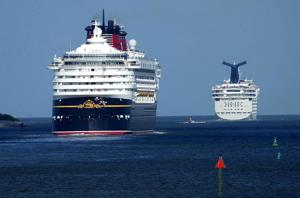The largest passenger vessels today are twice as large as they were in 2000, says a study conducted by European clean energy lobby group Transport and Environment (T&E) which warns of the environmental impact of the “rapidly” growing global cruise industry. The report suggests that the biggest cruise ships setting sail in 2050 could be nearly eight times larger than the infamous Titanic, the largest passenger ship in service when it set sail in 1912 (measuring 269 meters or about 883 feet), if the growth rate continues as it is. “Today’s cruisezillas make the Titanic look like a small fishing boat,” Inesa Ulichina, sustainable shipping officer at T&E, said in a statement.
“How much bigger can these giants get? The cruise business is the fastest growing tourism sector and its emissions are quickly getting out of control.” The number of cruise ships in existence has increased by 20-fold from 21 in 1970 to 515 today, according to T&E. On its launch in 1999, Royal Caribbean’s Voyager of the Seas, which has a gross tonnage (GT) of 137,276, was the biggest cruise ship in the world.
The cruise line brand’s 1,198-foot Icon of the Seas, which has seven swimming pools and a record-breaking 17,000-square-foot water park, became the world’s biggest cruise ship — with a gross tonnage of 248,663 — when it launched in January 2024. But the speed at which the cruising industry has boomed in recent years has come at a price, T&E says in its report. It notes that CO2 em.


















